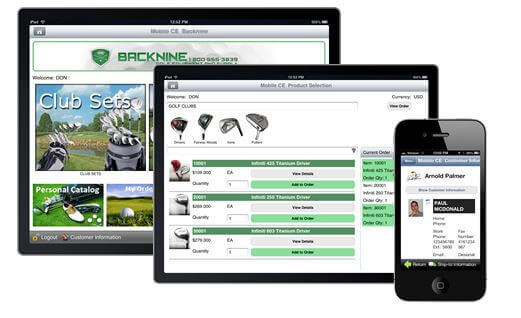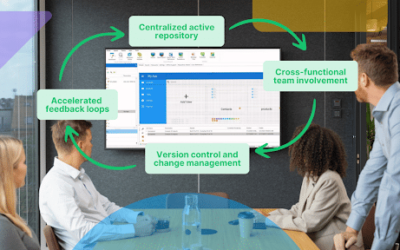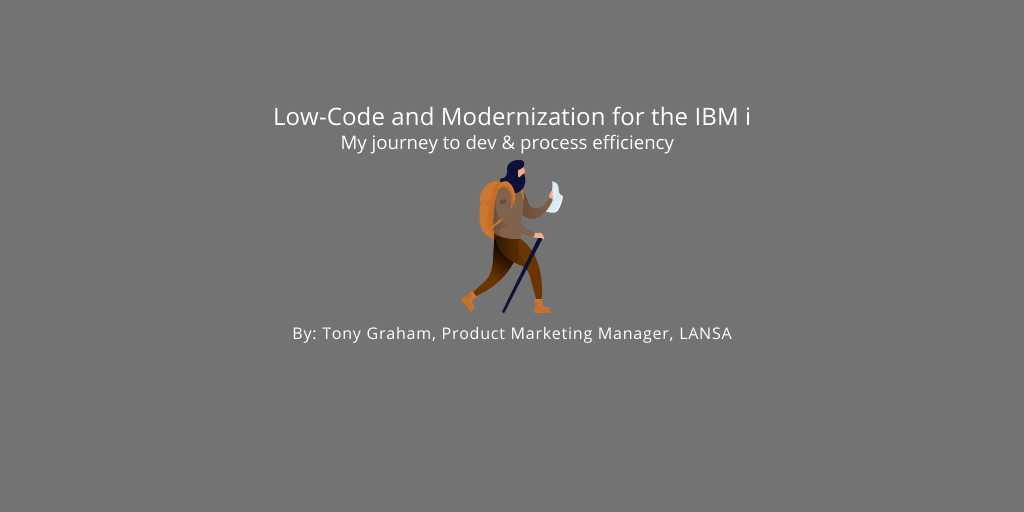Need to track your weekly calorie intake? There’s an app for that! Lack confidence in your math skills and want to ensure your server gets the appropriate tip? There’s an app for that too! You can find just about any mobile app imaginable on the Apple App Store and Google Play. From business to educational and games to entertainment, nearly 1 million apps are available for download. And approximately 50 billion app downloads have been recorded to date [for both iTunes and Google Play].
While apps are popular among consumers, they are gaining traction in the business sector as a way to streamline operations, make sales teams more efficient and improve customer service. In our work with manufacturers and retailers in the consumer packaged goods, hardware and automotive industries, we see firsthand how mobile solutions are helping businesses increase productivity and drive more sales – all without having to increase staff.
Here are some examples that show how effective mobile apps for businesses can be.
Mobile Apps in the Retail Industry
A retailer wanted to improve customer satisfaction by arming its in-store sales associates with the ability to answer customer questions about products – availability, price or the quantity in-stock – on the spot, without having to walk them to customer service. So the retailer developed a mobile app that integrates with its IBM i-based enterprise resource planning (ERP) system and provided each associate with a mobile device. Salespeople access the app on their device and use the smartphone’s camera to scan product barcodes, delivering all the product details directly into their hands. Customer questions get answered within moments and salespeople are instantly more productive, creating an overall positive customer experience.
Mobile Apps in the Manufacturing Industry
A manufacturer of All-Terrain Vehicles (ATV), personal water crafts and utility and recreational vehicles wanted to replace its card-based kanban system — used to signal the need to move parts from the warehouse to the production floor — with an electronic solution. The manufacturer developed a mobile app that integrated with its IBM i, allowing the corporation to essentially transfer their paper-based kanban management of inventory onto an iPad. Staff on the floor also uses the mobile app for cycle counting, scrap reporting, recording of inventory location moves and other warehouse and assembly related tasks. The solution has improved efficiency, increased productivity and reduced labor costs, saving them over $3,500 per day.
Mobile Apps for Sales
Businesses are turning to mobile apps to improve the efficiency of their sales teams and enable customer service to focus more of their efforts on bringing in new sales. For example, the field sales reps of a distributor of automotive parts constantly ties up customer service with their calls. From checking on a product’s availability and pricing to quantities and shipping fees, the business’ customer service department is consumed with handling sales calls. And when sales cannot get through to the department, they’ll take a customer order and pray upon returning to the office that the product is available. Try having to explain to a customer the order they thought they would receive quickly won’t be in until months later.
In these situations, customer service reps are oftentimes left to make amends with the customer, and retaining exceptional reps can be challenging due to the stressful nature of the job. The ramp up time of training a new rep on the i is costly and lengthy, so businesses seek to find a better balance – allowing customer service to support sales but also focus on bringing in new business – through mobile solutions.
Another reason sales directors are turning to mobile apps is because manual entry of customer order information has a significant impact on their bottom line. When multiple people are involved in processing a single order, the likelihood of error increases. From a salesperson recording the order in an Excel document and sending it to support staff, to the support staff then inputting that information into a green screen, a slight oversight or inaccurate keystroke can wreak havoc. Features like barcode scanning and personal product catalogs – built into the mobile app – play a vital role in streamlining the order taking process, not to mention the ease at which repeat orders can be placed.
Take a look at the challenges that come with both a traditional and low-code IBM web app in this guide.
Benefits of Mobile Apps for Business
In our experience, the benefits of developing mobile apps for business include:
- Maximizing order accuracy during the sales process by validating inventory levels, ensuring out of stock or inactive items are not added to the order.
- Minimizing manual data entry by providing users with touch-optimized navigation and the ability to scan barcodes.
- Reducing calls to customer service by allowing users real-time access to stock availability, customer specific pricing, product details and order information.
- Streamlining the sales process by utilizing credit card processing, signature capture, barcode scanning and geo-location capabilities.

Mobile apps built with full ERP system integration provides remote sales reps with the ability to access up-to-date product information and complete orders in the field.
I’ve told you how mobile apps for business supports sales enablement, efficient processes and can produce favorable cost-saving outcomes. So what are you waiting for? Go ahead, start the brainstorming process today!
To help get you started, I encourage you to check out LANSA case studies, mobile solutions or attend a webinar entitled Putting the “i” in Mobile, co-hosted by my colleague, David Brault and Steve Will, Chief Architect for the IBM i Operating System. On October 30, Steve and Dave will discuss the trends they see in IBM i companies needing and implementing mobile, as well as the role the IBM i OS infrastructure plays in enabling enterprise mobility.
Learn how to fully realize the benefits of a CRM system and truly transform your eCommerce presence in this article about IBM customer relations.

























